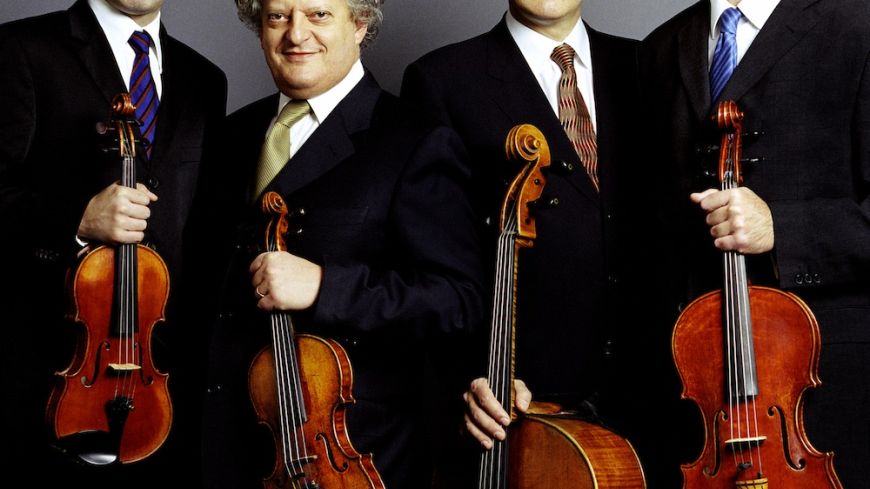
The Arditti Quartet – led by Irvene Arditti who formed the quartet at the Royal Academy of Music in 1974 – presented a brilliantly intriguing programme designed not to inspire the heart, but to indulge the head. A focal point of the performance – which was generously sponsored by Susie Thomson - was Tetras, which shares the same name as the Greek word for ‘four’ and was inspired by its composer’s experiences of working with the Ardittis. By the Greek composer Iannis Xenakis, this paradoxical piece explores the concept of four different voices pulling in the same direction. The various musical ideas of the piece created a puppet-like effect amongst the players, as no one voice moved into a new idea without pulling the other three along too. It was like a four-headed musical beast!
We were presented a musically thorough and cleverly arranged exploration of the work of American composer Conlon Nancarrow – a recluse, whose communist politics caused him to immigrate to Mexico City in 1940 from where he wrote much of his life’s work, in isolation from the rest of the musical world. Fascinated by rhythms that are humanly impossible to play and influenced by Stravinsky, Bartok and jazz, Nancarrow’s pieces extended conventional musical concepts by developing them in modern ways. We were taken on a journey through the musical idea of canon. The music introduced us to double canon (a four-part canon with two themes being played at once), a double inversion canon (the same concept, but with one of the themes turned upside down), a tempo canon (a canon in which different instruments perform the theme at different tempos – this started slowly, then voices entered at gradually faster tempos) and an eight-part canon, in which each instrument performed the theme twice simultaneously, at different pitches.
The players contributed impressively to the material. Jazz references were characterised with jazzy flair. Repeated glissandos were enhanced with rippling and swarming dynamics. In every sense, this was an assured, pristine and authoritative performance – perhaps naturally so, in view of the quartet’s various connections with the pieces they presented (Nancarrow wrote his 3rd quartet for the players, after hearing their performance of his first which convinced him they could play anything). Irvine Arditti’s glistening sound was created by a gentle, caressing touch. The concert opened with Janacek’s String Quartet no. 1, entitled the Kreutzer Sonata. This explores the idea of an unhappily married woman, a pianist, running away with a violinist with whom she performs Beethoven’s Kreutzer Sonata, the performance of which is overheard by her jealous husband who stabs his wife to death. This striking and evocative idea made good concert-opening material – seizing the curious attention of an 80%-full Queen’s Hall. Another piece, Ikhoor, also by Iannis Xenakis – who of course famously rejected 12-tone serialism, was thrown out of Arthur Honegger’s composition class and was eventually taught by Olivier Messiaen – was played with atmosphere and panache. We listened intently to music that sounded as if it could perhaps have been written before, not after, the world of tonal harmony had been created.

